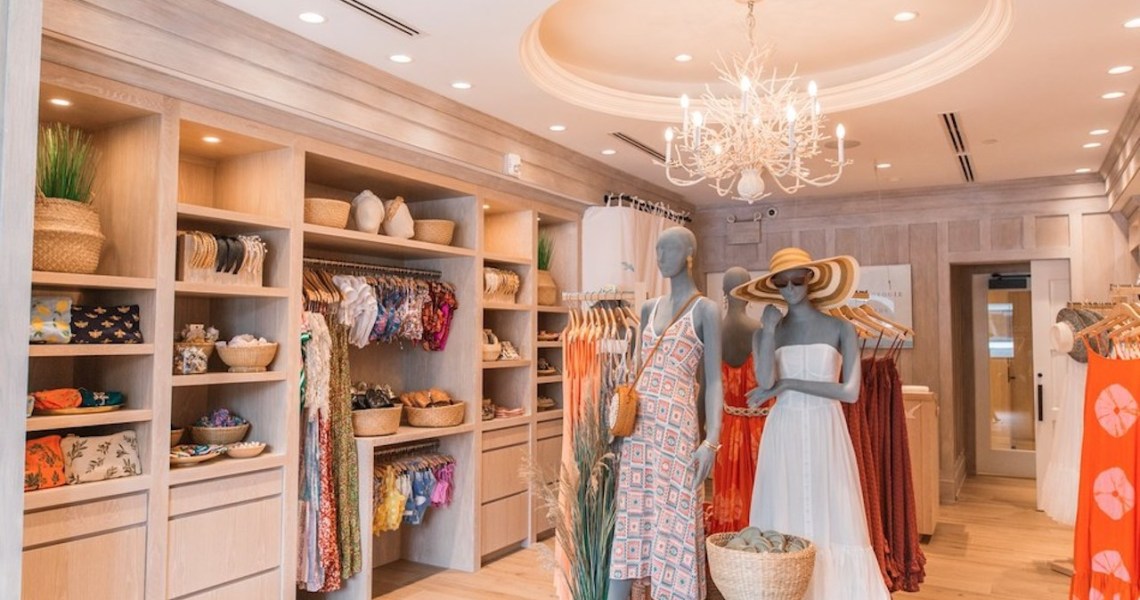To stay up-to-date on the latest runway shows, digital presentations and behind-the-scenes buzz, sign up to receive Glossy’s daily Fashion Month Briefing (September 9-October 4).
The last year has seen URBN, the parent company of Urban Outfitters, Anthropologie, Nuuly and other retailers, bifurcating its customer base.
As inflation has driven costs up, URBN’s portfolio has split. Its higher-price brands like Anthropologie and Free People have flourished, while lower-priced Urban Outfitters has struggled. In its most recent earnings, URBN revealed that Anthropologie grew its revenue by 7% and Free People by 4%, while Urban Outfitters’ revenue dropped by 9%.
The key to URBN’s strategy, according to URBN CEO Richard Hayne, is to lean into this split customer base, capitalizing on the full-price spending of the Anthropologie customer and the bargain-seeking behavior of the Urban Outfitters customer.
“Customer shopping behavior at our brands has bifurcated, with affluence being the differentiator,” Hayne told Glossy. “If the current macroeconomic situation doesn’t deteriorate further, we believe the customer bifurcation will continue through the entire second half.”
For both customers, inventory is key. Hayne said the team has been able to buy more aggressively for Anthropologie’s brands, knowing the demand is there for all that inventory to get sold. In particular, Anthropologie will be investing more in home goods inventory, which has outperformed other categories like gifts and entertainment.
“Anthropologie has done an excellent job of working through excess inventory,” Hayne said. “And we’re pretty much back in line right now, in both gift and entertainment [categories]. We’re starting to see much better full-price selling in gifts and entertainment, which gives us a lot of confidence for holiday.”
Ad position: web_incontent_pos1
On the other hand, Urban Outfitters is going to become more promotional, in order to sell through existing inventory, according to Urban Outfitters COO Frank Conforti.
“While we know the macro environment for the Urban customer may remain challenging for some period, we also know we can execute better,” Conforti said. “The brand has fashion that is working, but it did not buy inventory appropriately. As a result, the brand in North America will need to be more promotional to attract and convert this customer.”
While Anthropologie may be able to increase costs to customers without causing too much commotion, analysts said URBN should avoid doing that with Urban Outfitters if it wants to keep its lower-price customers happy.
“Urban Outfitters has a heavy retail footprint and may feel the need to increase their costs to the consumer to keep up with inflation. Instead, they should find ways to further automate their business so they can reduce overhead and increase margins to not pass off the cost to customers,” said Grayson Lafrenz, CEO of marketing company Power Digital, which works with more than 50 fashion brands.
URBN’s closest competitors, J. Crew Group and Gap Inc., are all in similiar states of flux. Both companies have brought in new creative talent, in the form of Brendon Babenzien and Olympia Gayot at J. Crew, and Kanye West, driving the Yeezy x Gap line at Gap. URBN hasn’t yet had the same level of a creative shakeup.
Ad position: web_incontent_pos2
But slumping sales across the entire apparel industry thanks to inflation means that J. Crew and Gap will likely also be leaning on promotions in the latter half of the year to clear out unsold inventory.
In a press statement, Katrina O’Connell, Gap’s CFO, said the company will be “taking actions to sequentially reduce inventory” including running promotions.
“First of all, we don’t know exactly what our competitors are going to be doing,” Hayne said. “We think there’s too much inventory across the board. I hesitate to call it a blood bath, but it’s going to be ugly, in terms of the amount of discounting and markdowns.”




